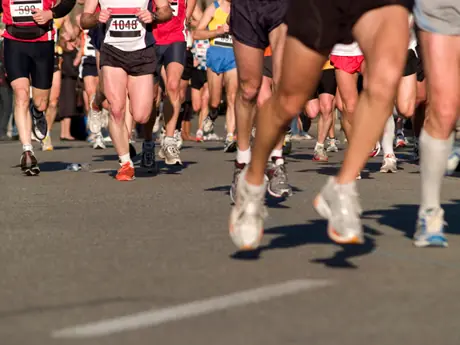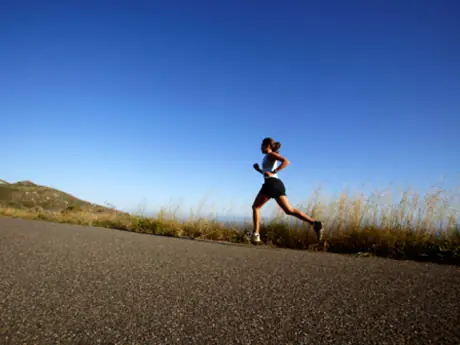The Breaker
The ability to change tempo within a race effort, particularly a 5K or 10K, is a learned skill. Athletes who possess the ability to shift gears within a faster training session or race are known as breakers—for their ability to “break” those against whom they are competing.
Ways to Improve Breaking
Most runners start and conclude their training sessions at the same pace—or slow down late in runs. By throwing in “gear changes” during a couple of workouts each week, you will give yourself the tools to move forward off of both quick or even more conservative tempos. The following are two distinctive sessions aimed at improving your ability to break.
Breaker Session No. 1
This one is simple. At ZAP, we call these “Squires Surges,” paying tribute to the great American marathon coach, Bill Squires, who would assign them to his top runners. Over the final half of a longer run during the week, toss in a moderate surge for 30-60 seconds, every 6-10 minutes. These surges are not large changes in pace, but subtle movements (perhaps 10-15 seconds per mile quicker) for short periods during a run.
Breaker Session No. 2
Gear-changing intervals are a twist on the typical interval session. Rather than a set pace for a set distance, there is a gear change mid-way through the interval. Try running 6-8 400-meter repetitions at 10 seconds per mile faster than your goal 10K rhythm. However, in this session, pick up the tempo just a hair over the final 100 meters of each 400—or the final straightaway on a track during each repeat.
Take 1:30-2:00 between each repeat after a proper warmup.
The Kicker
Kickers are the most feared racers in distance running. Kickers are those who typically lurk amongst their competitors until the final 400-1,200 meters—and then unleash a furious final sprint to conclude the race.
Ways to Improve Kicking
Improving your sprinting ability and related biomechanical power and efficiency are critical to augmenting your ability to sprint at the end of a race. Equally important is the often overlooked aspect of kicking: the ability to enter the final 20 percent of any distance race less fatigued—which, paradoxically, implies that additional long runs and increased aerobic strength lead to greater finishing speed. Kickers are occasionally born, but more often made. Try these two sessions to improve your kicking ability.
Kicker Session No. 1
This is a combination session. After a proper warmup, execute your normal 3 to 6-mile steady tempo run at 80-90 percent effort. But, unlike previous tempo efforts, this one finishes with a twist.
After you have concluded your tempo run, take 5-6 minutes of recovery and then run 4-6 200-meter sprints quicker than your 5K race pace. If you do not have access to a track, simply finish with the same number of 40 to 60 second sprints on an open road with full recovery (1:30-2:00) between each sprint.
Kicker Session No. 2
Hills have long been kind to those looking for improved finishing speed. Once every 9-10 days during your introductory training period, finish an easier training run with 8 to 10 hill sprints lasting 30-45 seconds, targeting more distance on the same hill during each repeat.
10K races are typically well-executed by those who understand each of these distinct approaches. For those looking to focus on one strategy—or improve across the board—these sessions will prove invaluable.
Connect with us on Twitter, Facebook, Instagram or Pinterest for more tips, recipes and ideas to fuel your ACTIVE life.
 Find your next race.
Find your next race.
- 2
- of
- 2
Get ACTIVE on the Go


Couch to 5K®
The best way to get new runners off the couch and across the finish line of their first 5K.
Available for iOS | Android







Discuss This Article